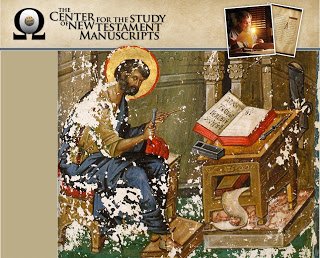
Blog & Resources
Looking for my thoughts on everything from bioethics to movies? You came to the right place. And while you’re here, check out my free downloadable resources.
Sign up to be notified when new posts release.
Hillary's Not the Only Woman to Make History
Want a summer read that’s part adventure story, part biography, part introduction to biblical manuscripts, part historical drama, and part faith journey? If yes, check out Janet Soskice’s The Sisters of Sinai.
The main characters are identical twins Agnes and Margaret Smith of Scotland. Their travels lead, among other places, to St. Catherine’s Monastery in the Sinai. There Agnes discovered one of the oldest manuscripts of the Gospels ever found.The sisters’ staunch Presbyterian father, widowed shortly after their births in 1843, raised his girls as one might raise boys in the Victorian era—educated, physically active, and engaged in the life of the mind. And he kept a promise that whenever his daughters learned a language, he would take them to where that language was spoken. Because the twins loved to travel, early on they mastered French, German, Spanish, and Italian. Their deep interest in the Bible and its languages eventually led them to add Hebrew, ancient and modern Greek, Arabic, and old Syriac to their resumes. It was knowledge of the latter, known only to a few people on earth, that opened the doors to Agnes’s big discovery.Both sisters were widowed early after inheriting massive sums from distant relatives. One twin had been married to a man who traveled widely; the other, to the librarian and manuscript custodian at Cambridge. Reading of the sisters’ unlikely educations combined with their father’s promise, the means to travel, and the contacts their husbands brought into their lives will leave readers marveling at the providence of God. A pilgrimage to the sites of Abraham and Moses took the women to the land of the pyramids, and a hunch about forgotten manuscripts led straight to a dark cupboard in St. Catherine’s Monastery. Agnes’s discovery had enormous ramifications at a time when people were questioning the now-established early dating of New Testament manuscripts.The Sisters of Sinai reads like an adventure book. The author herself has heady credentials: she’s Professor in Philosophical Theology at the University of Cambridge and a Fellow of Jesus College. Writing with the storytelling skill of a novelist combined with the research savvy of a scholar, Soskice recounts the twins’ challenges: traveling on camel and floating the Nile in a time of cholera when women were thought to need male escorts; interpersonal conflicts with jealous scholars who despised the sisters for lacking university degrees; and the misogyny that kept closing doors to the women and minimizing their contributions. But Solskice also provides an introduction to the world of biblical manuscripts that engages rather than makes eyes glaze over. And she draws on diaries to include the sisters’ internal pilgrimages of faith with their good, good God.Take this one to the beach; sometimes truth is stranger than fiction.THE SISTERS OF SINAI: How Two Lady Adventurers Discovered the Hidden Gospels, by Janet SoskiceIllustrated. 316 pp. Alfred A. Knopf. Published in 2010.
Can We Trust the Biblical Text?
Dr. Dan Wallace, founder of the Center for the Study of New Testament Manuscripts, recently spoke in the issues track at the Evangelical Press Association national convention. Wallace debated Ehrman in a major forum, and spends his life (when not teaching grad-level Greek) finding and photographing ancient manuscripts. He also wrote the Greek textbook used in Ivy League intermediate Greek classrooms. Wallace noted that Ehrman is the number one source for Muslims intellectually going after Christianity.
Wallace also said our approach to text criticism must be neither the despair of postmodernism (“We’ll never have the original”) nor the absolute certainty of modernism (“We can get back to the exact word-for-word text”).
Three key questions to answer are:
1) Quantity: How many scribal alterations are there (deviations from text in spellings, additions—even if they’re of no consequence)?
2)Quality: What kinds of textual variants are there?
3)Orthodoxy: What theological beliefs rest on theologically suspect passages?
Ninety-nine percent of the variants are spelling differences (think color and colour). John spelled the same word three different ways within a few verses. (They didn’t have Webster’s Koine Greek Dictionary to regulate spelling.) Then we have changes such as Jesus as “Lord” changed to Jesus as “Christ” and vice versa.
Next, we have variants that are meaningful but not reliable, such as the manuscript that has “We became gentle horses among you” where the others say, “We became gentle among you” or “We became children among you.” Just one letter is responsible for these changes in meaning.
There are 140,000 words in the New Testament and 400,000 variants. But that’s because we have numerous manuscripts—more than 5,700 in Greek totaling 2.6 million pages, with an average length of 550 pages; an additional 10,000 Latin manuscripts; and another 5,000 to 10,000 Georgian, Gothic, and Armenian manuscripts. (When we say we have 400,000 variants, we’re not saying we have that many in a single manuscript!) Add to this another million lines of quotations of the New Testament by church fathers. Compare all this with the average for the classical Greek writers I’ve been reading for my PhD program—fewer than 200 copies in existence. Amazingly, not once has anyone ever said to me, “You’re reading Pausanias? I wouldn’t trust that text. We have fewer than 500 extant copies.”
The smallest group of variants is meaningful and viable—is the number of the anti-Christ 666 or 616, for example. Fewer than 1% of variants fall in this group. And, “No essential Christian belief is affected by any viable variant,” Wallace said. No, not one.


